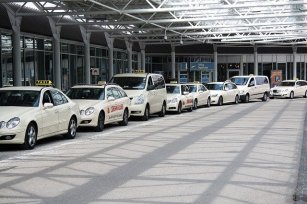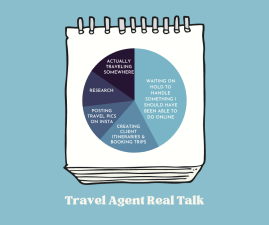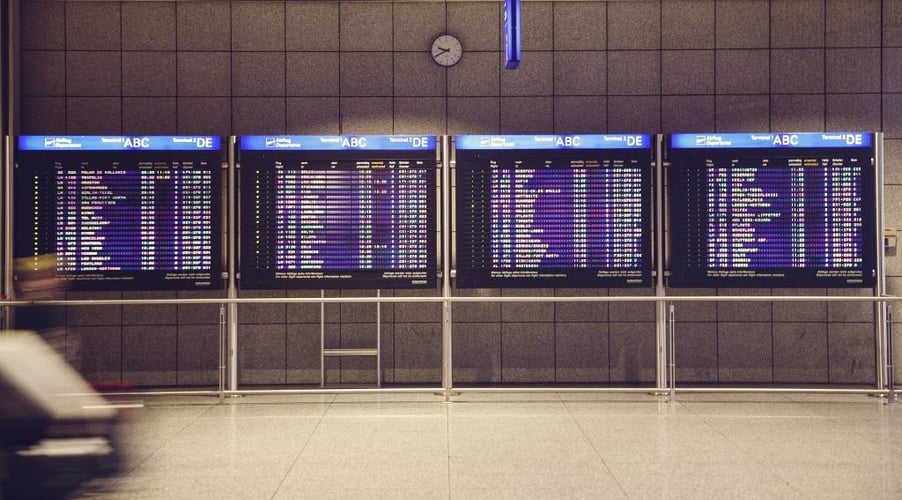Tips to Get Ready for an International Trip
It’s so exciting that international travel has returned! With summer approaching, many travelers may be gearing up for their first post-Covid (or first ever!) international trip in the coming months. Whether this is your first time abroad, or you’re just a little rusty after a couple of years at home, here are some things to do before, during and after your trip to make your adventure go smoothly.
Preparing To GO
Paperwork. Every international trip begins with your passport. If it’s been awhile since you’ve traveled, it’s important that you locate your passport and double-check its expiration date. Many countries require you to have six months of validity remaining on the day you enter the country; this is to help make sure that you are legal should something happen that prevents you from returning home on schedule. If your passport is about to expire, has expired, or you need a passport for the first time, you can find all the information on the State Department’s website. Keep in mind that it can take several weeks from the time you apply until you have your passport in hand.
Along with your passport, you’ll need to know if you need to arrange any visas ahead of your trip. Luckily, most American citizens can travel visa-free to a pretty good chunk of the world; additionally, some of the countries that require visas (for example, Egypt) allow you to purchase them upon arrival. However, there are some nations (like Australia) that require you to purchase a visa in advance.
The last thing you’ll want to check before you even book your trip are the covid-related entry requirements for your destination. Many places have dropped pre-travel/arrival testing or quarantine, and some have even dropped the requirement to show proof of vaccination. However, as of the time of this writing, several countries still have some kind of Covid-related restrictions that you’ll need to observe. A great resource is Sherpa; type in your departure country, arrival country and vaccination status, and it will direct you to the correct answers. Of course, your travel advisor can help with this as well! Restrictions change frequently, so be sure to check again as your trip approaches.
Packing, Paying for Stuff, & Connectivity. It can be a challenge to know what to pack for a trip abroad, especially if you’ll be gone a long time or need specialized gear like hiking boots. There are a few things you’ll need no matter what, however. If you’re bringing any electrical items (phone, laptop, etc), you’ll need a plug adaptor to be able to plug into the wall. Most electrical devices today don’t need an additional power converter, but double-check before you pack.
Make sure to pack contacts, glasses, prescriptions, and other things that would be difficult to replace; I especially recommend packing these in a carry-on bag. On that note, I try very hard to pack only in a carry-on. Baggage fees can really add up, depending on the airline and destination, and it makes things much simpler to have your bag with you if you miss a connection or have to reroute.
Before you leave on your trip, check with your bank to see if you will be charged any foreign conversion or foreign transaction fees. If possible, bring a card or two that do not charge foreign transaction fees; additionally, knowing the PIN for your card may come in handy. When visiting a destination that operates on a mostly cash basis, know your options for getting cash; in much of the world, it’s as simple as sticking your debit card in an ATM at the airport and putting the cash in your wallet. For destinations where this is more difficult, you can bring cash from home and exchange it for local currency if needed.
Finally, if you plan to carry a cell phone with you on your trip, you’ll want to decide whether or not to sign up for an international calling plan. Alternatively, you can use your phone on airplane mode connected to wifi where available. I personally like to be able to use my phone abroad just like I use it here; we are with AT&T, and I have signed up for their “International Day Pass” program. The pass costs $10/day, and is only activated when I connect to a foreign cell phone tower. I can use my talk, text and data just like I do at home. To me, $10/day is worth it for the convenience of having my phone available.
Preparing the House. When leaving on a long trip, there are a number of last-minute tasks to complete before you leave. We typically arrange for someone to check on the house at least once while we’re gone; some people have plants to water or pets that need to be fed while you’re gone. Stopping the mail just requires filling out one form online, and it’s a good idea to have a neighbor or friend check for any packages that might be dropped on your stoop while you’re gone.
En Route
If you’re flying internationally, there’s a good chance that you will be on a red-eye/overnight flight at some point in your journey. Even if you are not, you’ll likely be on a plane for several hours.
Be sure to wear comfortable clothes for the flight; layers make it easy to regulate temperature should the plane be a bit too hot or too cold for your liking. A warm pair of socks helps keep your feet nice and cozy. If you plan to sleep, you may want to bring a sleep mask, noise-cancelling headphones, and perhaps a neck pillow. I personally find neck pillows to be very uncomfortable; most large long-haul jets now have adjustable head rests that feel more comfortable to me.
I have a tough time sleeping on a plane, but an overnight flight is sometimes a necessity. I’ve developed a bit of a routine that seems to help. First, I do my bedtime routine before I even get on the plane: take out my contacts, wash my face, brush my teeth, etc. Depending on the time your flight departs, it may make more sense to do this after you’ve taken off.
About half an hour before I get on the plane, I’ll take either a small dose of Benadryl or a Zzquil. I don’t use either product very often at home, but I’ve found that they help me to relax enough to get some sleep. Some people swear by a beer instead; others – like my husband – have zero issue falling asleep on the plane. The hard part about overnight flights is that you need to be functional on arrival day, so I have figured out what I need to do to get at least a few hours of rest.
As soon as I get on the plane, I set my watch ahead to destination time and settle in. Put everything you think you’ll need for the flight either at your feet or in the seatback pocket. Get comfy. My small daypack under the seat in front of me doubles as a foot rest. Personally, I try to go to sleep as soon as practical on the plane. Flying with kids or leaving earlier in the day might mean that you have a few hours before you can settle in for the night.
Red-eye flights with children can be tough, especially if flying is a new experience for them. Every kid is different. A familiar pillow, blanket or stuffed animal may be helpful in this situation, and full bellies prior to boarding can also make a difference. I’ve been lucky that flying has tended to induce sleep for my kids.
Once I’m awake on the plane, I’ll try to drink extra water and listen to or watch something low-key. If breakfast is served on the plane, I’ll usually eat it. This is also a good time to catch up on any arrival details, transportation connections, or other “to-do” list items.
on Arrival
Arriving in a new country can be a bit intimidating, but it always follows the same basic steps. First, you’ll exit the plane and head towards passport control. If you’re making a connection, you will likely go through passport control at your first airport in-country, but that may depend on your destination.
Most passport control areas have multiple lines: ones for citizens of the country you’re in, and one for everyone else. A few places – like London-Heathrow- have automated machines that scan your passport photo page and use facial recognition technology to verify your identity. In the majority of cases, you’ll have to present your passport to the border control officer. He or she may ask a few questions about your final destination or how long you plan to stay in the country. Answer politely and briefly. If the officer needs more information, he/she will ask. Do not use your phone or attempt to take photos while in the passport control area of the airport.
If you’ve reached your final destination, your next stop is likely to be baggage claim. Pick up your bags, and then head towards the exit. You may need to go through customs prior to exiting the airport; typically this just means walking out the door, but if you have something to declare or you get chosen for a bag search, it may take a few minutes and an interaction with a customs official. Again, answer any questions politely and briefly.
Unless your final destination is the airport, you likely still have a bit of journey left before you reach your hotel, vacation rental, friend’s house, cruise ship or wherever you might be staying. Hopefully, you have researched (or your travel agent has arranged) some kind of transportation from the airport.

Many foreign airports are connected to city centers by public transit, and that is typically your least expensive way of getting into town. However, it may be faster or simpler to take an Uber, taxi or arrange for private transfer ahead of time. Personally, I really like knowing someone will be there holding a sign with my name on it after a ten hour flight! If you’re working with a travel agent, they can likely arrange a transfer for you; if you’re more of a DIYer, you can check either Viator or WelcomePickups for some good options.
The last part of the journey abroad is fighting jet lag! Depending on which direction you are headed, you may have flown overnight or been on a plane for seventeen hours. RESIST the urge to lie down and take a nap! Do whatever you can to keep moving until a normal-ish bedtime; take a walk, go for a ride on a bus, play a game of soccer with the kids in the park, sip a coffee in a cafe…whatever it takes. Hydrate, get a good night’s sleep, and go with the flow when you wake up really early the next morning!
The Return Trip
Returning to the USA from abroad is generally a pretty simple process; you’ll repeat the steps you took to go abroad, just in reverse. There are a couple of wrinkles to consider, however.
First, at the time of this writing, all travelers entering the United States by air need to complete a covid test one day or less prior to their flight, and be prepared to show proof of the negative test at the airport. I’ve traveled internationally a couple of times in covid times, and have used the eMed tests without incident both times. You do need an internet connection to be able to do these tests. If you prefer to get a test locally, your hotel concierge may be able to help you find a testing site; plan ahead, however, to make sure that you have any required appointments.
Checking in at the airport is usually straightforward, although I would plan a bit of extra time to deal with the covid-related formalities. If you’re flying from Ireland, Nassau, Bermuda, UAE or Canada, you’ll also go through preclearance and deal with US customs and border control prior to boarding your flight to the USA. This can actually be a big benefit, as you’ll get to just breeze through your first US airport – but plan for extra time prior at your departure airport!
As a US Citizen or permanent resident, getting through passport control should be a piece of cake. Typically, this happens in the first airport you stop at in the USA. Note that you’ll have to pick up your bags, and carry them with you through customs before re-checking them prior to boarding your connecting flight (if you have one). If you have Global Entry, this process is even quicker as you are essentially pre-cleared.
After you Get Home
It never cease to amaze me that I can wake up in one country, put myself on a flying bus for several hours, and go to bed in a completely different country! Returning home always feels a bit surreal in that way. After you’re unpacked, and your laundry is done, there’s only one thing left to do: start planning your next adventure!



